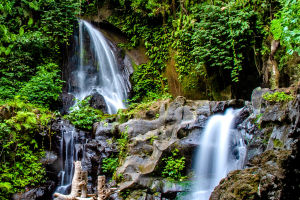When planning a trip, one of the key decisions to make is when to go. The season in which you travel can have a significant impact on your experience.
Each season comes with its own unique advantages and disadvantages, from weather conditions and crowd sizes to price fluctuations.
By understanding the pros and cons of traveling in different seasons, you can make an informed decision that aligns with your preferences and the kind of trip you want to have. In this article, we will explore the benefits and drawbacks of traveling during various seasons, helping you choose the perfect time for your next adventure.
Winter Travel: Embrace the Magic or Endure the Chill?
Winter is a season that appeals to some travelers who enjoy the cold, but it can be off-putting for others. Whether you're hitting the slopes or seeking winter landscapes, the season offers some unique advantages.
Advantages:
• Lower Prices: Many destinations experience a drop in tourism during the winter months, especially those not traditionally associated with winter sports. As a result, you can find lower prices on accommodations and flights. For those traveling on a budget, winter travel can be a great time to score a deal.
• Fewer Crowds: If you prefer to explore without the throngs of tourists, winter is the ideal time to visit popular sites. Museums, historical landmarks, and even major cities often have fewer crowds, making it easier to enjoy a peaceful experience.
• Winter Sports: For adventure seekers, winter is the season for skiing, snowboarding, and other winter sports. Ski resorts offer exceptional opportunities for both beginners and experienced enthusiasts to enjoy the snow.
Disadvantages:
• Cold Weather: Depending on your destination, winter weather can be harsh, especially in places with sub-zero temperatures. This might limit outdoor activities or make sightseeing less enjoyable for those unaccustomed to the cold.
• Limited Activities: Many destinations, particularly beach or nature-based locations, have limited outdoor activities during the winter months. Beaches and parks may be too cold for comfort, and some tourist attractions may close for the season.
Spring Travel: Perfect Balance of Mild Weather
Spring is often regarded as one of the best times to travel. With moderate temperatures and blossoming landscapes, spring offers a comfortable and refreshing experience for travelers.
Advantages:
• Ideal Weather: Spring is characterized by mild temperatures, making it perfect for outdoor activities. Whether you're hiking, sightseeing, or enjoying city tours, the weather is comfortable and pleasant, not too hot or too cold.
• Floral Blooms and Festivals: Spring is the season for blooming flowers, such as cherry blossoms in Japan or tulips in the Netherlands. This season is also rich in cultural festivals, offering vibrant celebrations of local customs and traditions.
• Less Crowded than Summer: While spring is a popular time for travel, it generally has fewer crowds than summer, meaning shorter lines, less crowded attractions, and a more relaxed atmosphere.
Disadvantages:
• Rain Showers: Spring is notorious for unpredictable weather, with frequent rain showers and thunderstorms in some destinations. Travelers should be prepared for occasional wet conditions and carry an umbrella or raincoat.
• Higher Prices than Winter: While spring is not as expensive as summer, it's often more expensive than winter, especially in tourist hotspots. The combination of better weather and blossoming landscapes leads to an uptick in tourism, which can drive up accommodation and flight prices.
Summer Travel: Peak Season for Popular Destinations
Summer is the peak travel season, with sunny skies and warm temperatures making it an attractive time to explore new places. However, summer also comes with its own set of challenges.
Advantages:
• Best Weather for Outdoor Activities: For those seeking beach vacations or outdoor adventures, summer is the best time. Warm temperatures and long daylight hours mean you can make the most of your trip by engaging in activities like hiking, swimming, and sightseeing.
• Vibrant Destinations: Summer is the height of the tourist season, meaning many destinations are buzzing with activity. Festivals, open-air events, and lively street markets make this an exciting time to experience local culture and enjoy a festive atmosphere.
• All Attractions Open: Most tourist attractions, including museums, parks, and entertainment venues, are fully operational during summer. Additionally, some regions only come alive in the summer, offering a wide variety of experiences.
Disadvantages:
• Crowded and Expensive: With peak season comes higher prices for flights, accommodations, and tours. Popular destinations can be overcrowded, which may diminish the enjoyment of your trip, especially if you prefer quieter, more intimate experiences.
• Extreme Heat: Some regions experience extreme heat during the summer, making outdoor activities uncomfortable or even unsafe. High temperatures can also result in larger crowds at popular tourist spots, making it more difficult to enjoy the experience.
Autumn Travel: A Season of Tranquility and Beauty
Autumn, or fall, is often considered one of the most picturesque times of the year. The changing leaves, crisp air, and fewer crowds create a relaxing environment for travel.
Advantages:
• Stunning Scenery: Autumn is known for its breathtaking foliage. The vibrant colors of the leaves, especially in places like New England or parts of Europe, create stunning backdrops for sightseeing and photography. It's a season filled with natural beauty.
• Comfortable Weather: The temperatures in autumn are often cooler than summer but still mild enough for outdoor activities. It's an ideal time to explore cities, hike in nature, or enjoy cultural festivals without the intense heat of summer.
• Lower Prices: Fall typically offers lower prices compared to peak summer months. Accommodations and flights become more affordable, especially in destinations that see fewer tourists in the off-season.
Disadvantages:
• Shorter Days: One downside of traveling in the fall is that daylight hours are shorter, meaning less time to explore. Depending on your destination, this can limit the amount of sightseeing you can do in a day.
• Possible Rain and Unpredictable Weather: Like spring, autumn weather can be unpredictable. Rain showers and sudden temperature drops are common in many regions, so it's important to pack layers and be prepared for changing conditions.
Choosing the Best Season for You
Ultimately, the best season for travel depends on your personal preferences and what kind of experience you want to have. Winter offers a chance for adventure and fewer crowds, but the cold weather can be a deterrent for some. Spring offers a perfect balance of pleasant weather and blossoming landscapes, though it can bring occasional rain.
Summer provides the best weather for outdoor activities and vibrant experiences, but the crowds and higher prices may not be ideal for all travelers. Fall, with its stunning natural beauty and lower prices, is perfect for those seeking a tranquil experience, but the shorter days and unpredictable weather can pose challenges.
When planning your next trip, consider the advantages and disadvantages of each season and how they align with your travel goals. Whether you're seeking adventure, relaxation, cultural experiences, or nature, there's a season that's right for you.


